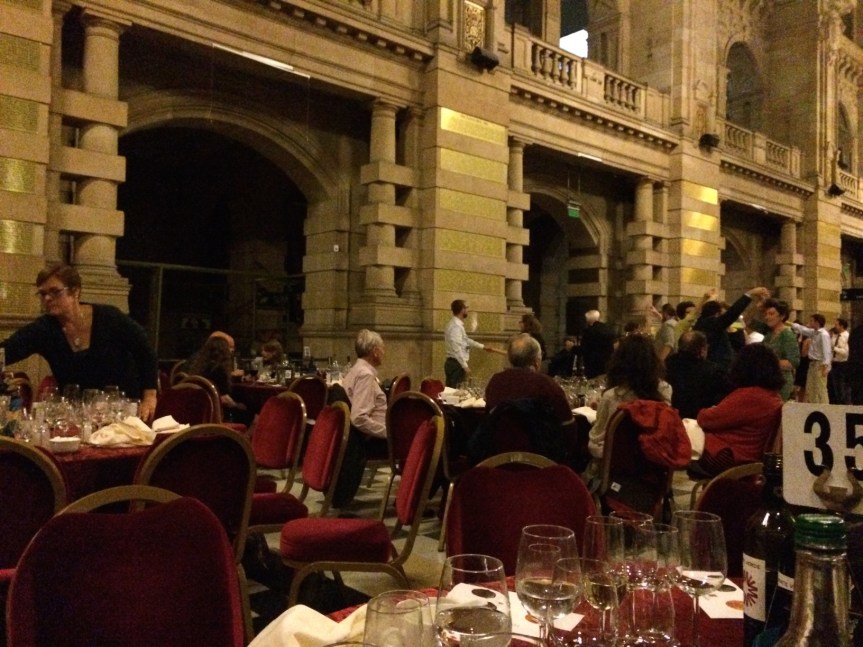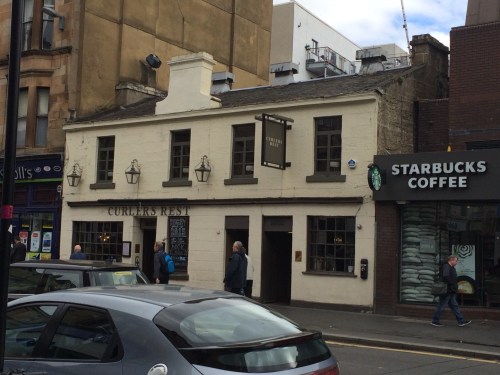About a month ago, Tracey Sinclaire and Beth Verge from Anchorage TV station KTUU came to Utqiagvik to do a number of weather/climate-related stories. One was on the effects of coastal erosion. I took them out toward Nuvuk/Point Barrow as far as seemed prudent for the vehicle I had, and got interviewed. The weather was quite challenging while they were here, but they hung in and got stories on the NOAA site, and the blue football field which is endangered by coastal erosion.
Tag: erosion
Climate Change and Cultural Resources seminar (SAA members only)
As usual, things have been busy. One of the things I’ve been busy with was an online seminar for the Society of American Archaeology on “Climate Change and Cultural Resources.” Despite some connectivity issues, it went off well. SAA records these seminars, and you can watch them if you are a current member. You will need to be logged in to the SAA web site member section to access the archive. The climate change one is here.
Call for Papers for SAA session on Environmental Change Impacts
I’m back from over a month in the field, and just got the Committee on Climate Change Strategies and Archaeological Resources (CCSAR)-sponsored session set up for next spring’s SAA meetings. The session abstract is here.
We are looking for papers. If you are interested and have a paper you think might fit, contact me!
NB. The hard deadline is coming up fast (September 6, at 3PM ET) and you will need to be registered and with fees paid to be accepted. You don’t have to renew/establish your SAA membership right now, but will need to do that by the end of January 2019 to give the paper.
Antiquity article out!
A group of us have been working on an article on climate change and the effects it is having on archaeological sites and the cultural heritage and environmental information they contain. It has finally been published in the journal Antiquity. It is open access, so you can read it here. Local sites, especially Walakpa, make an appearance.
Papers wanted–Climate Change & Archaeology Session
SO late last year I submitted a session proposal on Environmental Change Threats to Alaskan Cultural Heritage. I never heard anything, so I assumed the session wasn’t accepted and what with the holidays & the knee replacement, I didn’t try to solicit papers.
I just learned that the session was accepted, so I am looking for participants. The organizers are being kind enough to give us a couple of extra days past tomorrow’s deadline, but this has a pretty short fuse. The abstract is linked here, but in short, I want to get a conversation started about this issue. In many ways, Alaska has more at risk, sooner, than most of the rest of the US or most of the rest of the world, but we seem to be responding more slowly than places like Scotland or Florida or California. I am hoping for papers that either highlight sites that are being or have been destroyed (you don’t need to have completed excavation & analysis), or showcase specific ways that communities, agencies and/or archaeologists have tried to deal with the issue. We should have time after the papers to actually start a discussion on ways to deal with this problem beyond simply noticing it exists.
Please send abstracts to me (amjuics@gmail.com) and to Andy Tremayne (Andrew_Tremayne@nps.gov).
Contact me (amjuics@gmail.com) if you have any questions.
Getting closer
Time is flying before the field season. It has been insanely busy trying to get some projects to a point that they can be left for a few weeks while we’re in the field, while at the same time getting set to actually go to the field. We have been ordering things, and waiting for them to get here so we can build things, or pack things or prep meals or… And of course, this being the Arctic, shipping delays abound. However, we have gotten the replacement cover for a Weatherport, all the recalled transit batteries, extra new batteries for the handheld radios, Rite in the Rain paper for field forms, the refurbished iPads, the nice new big First Aid kits, chaining pins, Sharpies (lots of Sharpies) and a bunch of other goodies. I got my new tent stuff sack (the original lasted one trip, and all the duct tape in the world isn’t enough to hold what’s left together if I actually put the tent in it) and my InReach. We are still waiting on the parts for a water screening station, and the dry goods.
The lab looks a mess, because everything is still out from the inventory, and needs to be packed, but some of the things to pack it in are part of the freight. Not optimal, but it will sort itself out.
The freeze and chill food got in, and Kaare will be working with the volunteers to prep a lot of meals to freeze before we head down. That is, once there are enough volunteers here.
The first of the volunteers were to get in Tuesday night, but the plane couldn’t land, so they all wound up heading back to Anchorage, getting in quite late. One got on the early flight today on standby, but the rest are now coming tomorrow morning. I figured maybe 2 nights in Anchorage would be a student budget-buster (having slept under some stairs once when stranded in England for a week on the way home from the field–Laker had raised ticket prices over the summer and I didn’t have a credit card), so I posted on a couple of northern archaeology Facebook groups, and had 5 offers of places to stay from folks in Anchorage within a couple of hours. In the end, folks couldn’t get refunds for the nights they paid for (a downside of online booking, I guess), but if anyone else gets stranded overnight on the way in or out, at least I’ve got a bunch of phone numbers and we should be able to help out. Gotta love Alaskan archaeologists.
Kaare made it to Walakpa, although there is still snow on the beach. There has been a good bit more slumping, but it looks like the overhanging block that was making access so dangerous has fallen, which is a good thing indeed. The plan is to try to take some of the heavy stuff down tomorrow, although that may change depending on if the freight makes it in.
We’ve also got a survey to finish before we go (only got the go-ahead a week ago) and maybe a desktop study as well, depending on their timeframe (just got the go-ahead today). Oh, and a proposal, which was just requested yesterday.
And I need to finish making sense of a bunch of dates which I have calibrated for the WALRUS project. It looks like we have decent ranges for many of the sites based on the caribou dates. There are a couple of sites that are confusing (possible reverse stratigraphy in big mounds) and I haven’t been able to get copies of the field notes or talk to the excavators yet. I’ve calibrated the walrus dates using the marine curve, and it is clear there is not a standard offset from the terrestrial dates. I’m redoing it using the best available local delta R, but I know the one for Barrow is off by several hundred years (if you use it there are a lot of bones from archaeological sites that it indicates will be dying in a couple of centuries!) and there is one site in the walrus study where one pair of dates on associated caribou and walrus is several hundred years farther apart that the other pair. Since walrus move around, some probably more than others, it may not make sense until we figure out where the individuals were feeding.
Radiocarbon dates
I have been really busy the last month, trying to finish several reports and papers, plan for the summer, and get ready for a research visit from Tony Krus of SUERC, who was a member of the 2008 Nuvuk field crew before he headed off to grad school. He is now Dr. Krus, and was able to get a grant to come over and work on Bayesian modeling for Barrow area dates, as well as attempting to improve the value for DeltaR (a correction factor used with radiocarbon dates on marine organisms to compensate for the excess older carbon found in the oceans). Between the massive amount of writing I was doing and smashing a finger getting luggage out of the overhead coming back from a trip, I’ve not been blogging.
I hope to catch up with things a bit; there’s been considerable activity on the DONOP/global change threats to cultural and natural heritage front, as well as planning for Walakpa.
Talking about Climate Change and Threats to Heritage
I spent most of the day talking about climate change threats to cultural heritage and archaeological resources. I started off at a fairly conventional session about archaeology at various sites in Alaska and the Pacific Northwest, which had a number of interesting papers, many based on analysis of well-preserved faunal remains.
I then went on to the first formal meeting of the newest SAA committee, on Climate Change Strategies and Archaeological Response (CCSAR). Dan Sandweiss, who is the SAA board liaison, as well as being one of the earlier people to call attention to the importance of archaeological sites as archives of paleoenvironmental data, as well as the obvious archaeological data. It seems to be a really great group of people,working in a lot of different places, all of which are having some climate issues. Most of them are interested not only in saving data, but in what that data can tell us about past climates, and about how people adapted to changes in them. As one person said, “We really don’t have much data about the Archaic, the last time people lived sustainably in North America.” This may be a bit of an exaggeration, especially for Alaska, but basically the idea is correct.
After that, I had to go to an appointment in the book room. We will see what comes of that in due time.
Then there was another interesting session on Heritage Tools for Tackling Climate Change. This included a variety of talks on ways people are dealing with the effects of climate change. One had to do with melting ice patches in Glacier National Park, and how the Park Service had dealt with material coming out, in consultation with the local Native American community, as well as studies they were doing so they could be proactive. Another paper included information on the California Cultural Resource Management (CRM) community’s efforts to get public lands on the coast surveyed completely.
There was some discussion about whether the US ban on revealing any site location data helps or hurts. Most other countries will reveal that data, although they may wait until very valuable materials have been properly excavated in some cases. They have found that it decreases looting, if anything. It also helps people avoid inadvertent damage that happens when people don’t know a site is there, and lets them report on changes in site conditions. So instead of a few archaeologists, lots of people can keep an eye on the sites. Here they can’t do that. I suspect, as do many others, that the people who are serious looters already know where the sites are, and have a pretty good idea where to prospect for more. On the other hand, when the US government shut down for a couple of weeks in 2013, looting exploded in the National Parks.
Tomorrow morning the session I organized on Global Change Threats to the Archaeological and Paleoecological Record (not snappy, but lots of buzzwords for search engines) happens.
EAA 2015 and Glasgow
We went to Glasgow where the 2014 European Archaeology Association was held, by way of Anchorage and Reykjavik. Because flights from Barrow are disrupted fairly frequently, we went down a bit early, and had a chance to visit with our daughter. There was a pretty amazing double rainbow and a nice lenticular cloud.
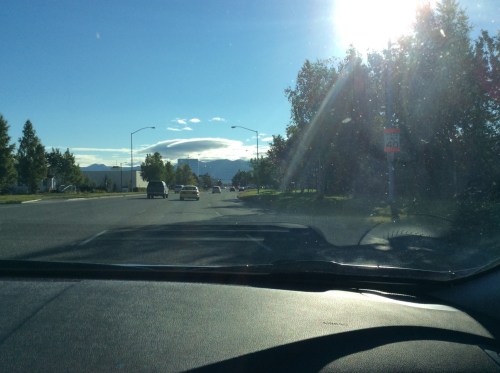
We flew Icelandair to Reykjavik and then from there to Glasgow. Glasgow was great. The people who live there seem really proud of their city. The cab driver on the way in from the airport was recommending museums, and in particular Christ of Saint John on the Cross by Dali at the Kelvingrove Art Gallery & Musuem. Glasgow was once the second most prosperous city in the UK, and the residents seem to have been very civic-minded. The Kelvingrove was built to house the collections that were donated by prominent Glaswegians, using funds from an international exposition and public subscriptions. It houses a fair bit of Charles Rennie Mackintosh material. We got in a good visit our last day there. Unfortunately, some of the other Mackintosh venues were under renovation.
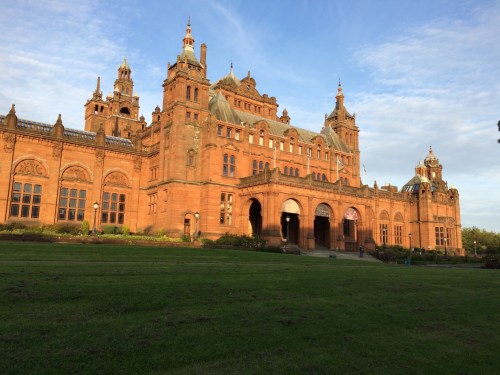
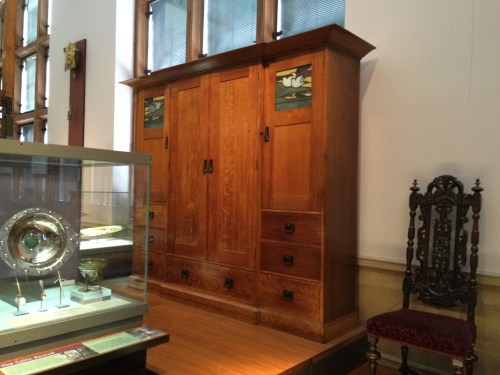
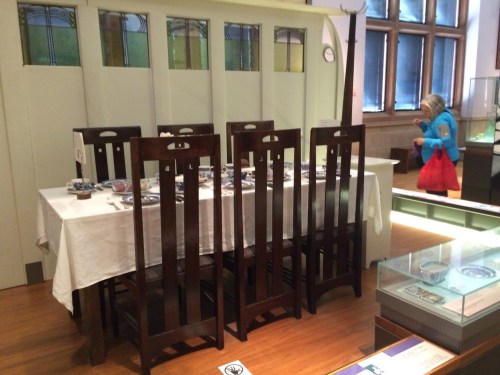
The meetings were held in various venues at the University, including some very old lecture halls and more modern buildings.

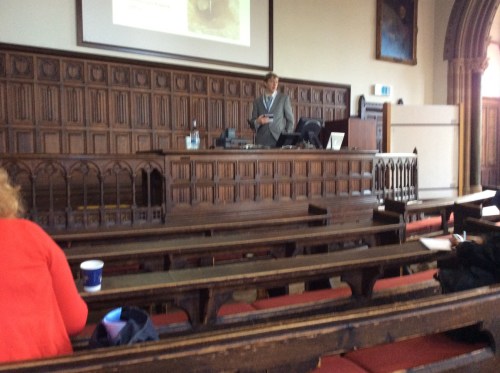
We spent most of our time around the University. There were a number of good restaurants & pubs, particularly along Ashton Lane. We tried a bunch of them. We never made it to this one,which was apparently an isolated inn before Glasgow got so big, near a pond where local curlers used to throw rocks. This is apparently where they went afterwards back then, as curlers are wont to do :-).
Our session (Archaeology and Climate Change) was heavily advertised. Tom Dawson, the organizer, had managed to get leaflets put up all around campus before the session, so it was very well attended. As you can see, there were participants from all over. I talked about the threats to frozen coastal sites from climate change, with an emphasis on the Barrow area. I was able to incorporate images from the storm that had happened the week before. There were some other pretty bad situations, but none that were worse. On the other hand, some people are making strides in dealing with these issues with public help, which is good given the turn-around time for even successful funding applications.

The conference featured a very nice party, spread across two venues, both within a block of our hotel! One was Òran Mór, a converted church which now houses performance space and a bar. The upstairs had been rented for the party. It had obviously been redone from its days as a church. The other was the glass house at the Glasgow Botanic Gardens, just across the way.
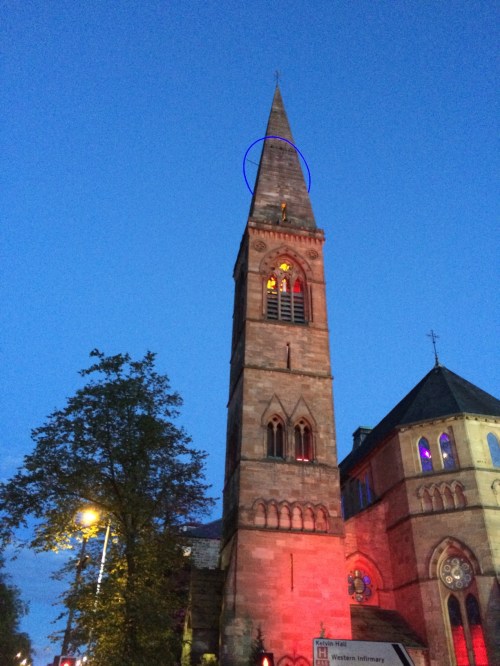


The conference banquet was held in the main hall at the Kelvingrove. It was sponsored by Glenmorangie (the distillery near Glasgow) so there were samples of a couple of their special products. After the speeches and dinner, there was a fine band and dancing.
